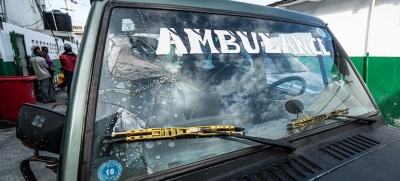CHIRILAGUA, El Salvador, Nov 07 (IPS) — Neither the central government nor most of El Salvador’s 262 municipalities have had the capacity to install enough wastewater treatment plants to prevent it from being discharged directly into the environment.
As a result, most of the rivers are polluted to such a degree that only 12 percent of them have good quality water, and the pollution translates into gastrointestinal and other diseases among the 6.7 million inhabitants of this Central American country.
But there are some towns and cities that are making efforts to keep running the treatment plants they have managed to set up, with financial support from international institutions.
One of these municipalities is Chirilagua in eastern El Salvador, along the Pacific Ocean in the south, the only ocean that bathes the coast of this Central American isthmus country.
The municipality operates a wastewater treatment plant built in the surrounding area as part of a 40-unit housing project called La Española that houses 40 families affected by Hurricane Mitch, which caused death and destruction in Central America in October 1998.
The project was largely financed with funds from the government of the southern Spanish region of Andalucía.
"The benefit is to the environment and to the families living around here, because the less the environment is polluted the healthier the population is," Eduardo Ortega, in charge of the plant’s maintenance, told IPS.
The treatment plant filters the sewage that arrives at the station, using various processes, including ponds filled with volcanic soil and gravel.
"The aim is to keep the treated water from polluting the San Roman River," said Edwin Guzman, head of the Environmental Unit of the municipality of Chirilagua.
Close to the municipality is another rural settlement also built by Spanish aid funds for survivors of Hurricane Mitch, called Flores de Andalucía, which includes its own treatment plant.
With greater capacity, this station also receives sewage from El Cuco, a fishing village three kilometers to the south on a beach that due to population growth has become a town with modest stores, hostels and restaurants that receive tourists attracted by its gray sand beaches and gentle waves.
In El Salvador, only 8.52 percent of wastewater receives some type of treatment, and much of the waste is dumped into the different bodies of water, polluting ecosystems and harming people’s health. Now some communities and municipalities have managed to install treatment plants that are run by local residents and improve their lives.






